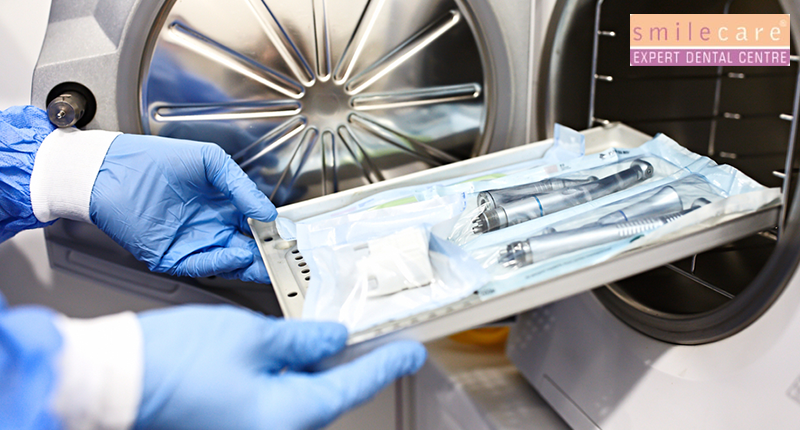Dental experts use dental instruments to execute a variety of operations, such as cleanings, fillings, extractions, and more. However, if not thoroughly cleaned and sterilized before use, these instruments can pose a serious risk to patients. It is impossible to exaggerate how crucial it is to properly clean and sterilize dental equipment since doing so ensures patient safety and produces the best possible treatment results.
Why Is Proper Dental Instrument Cleaning and Sterilization Procedure Important?
A great environment for the development of dangerous bacteria, viruses, and other germs is the mouth. During dental treatments, dental equipment encounters blood, saliva, and other biological fluids, making them possible carriers of infection. These microbes can spread from patient to patient through improperly cleaned and sterilized medical equipment, leading to several illnesses, including hepatitis B and C, HIV, and bacterial endocarditis, among others.
To stop the spread of these harmful organisms, it is essential to clean and carry out dental instrument sterilization. Cleaning entails removing both visible and invisible waste from an object’s surface, whereas sterilization requires eliminating all germs, including bacteria, viruses, and spores. To protect both patients and dental workers, both procedures are important.
Steps Involved in Proper Dental Instrument Cleaning and Sterilization
The following are the basic steps involved in proper dental instrument cleaning and sterilization procedures:
All dental equipment must be properly cleansed to get rid of any apparent dirt or organic material before sterilization. You have two options for doing this: manually or using an ultrasonic cleaner. In manual cleaning, the instruments are scrubbed with a brush and cleaning solution, whereas in ultrasonic cleaning, debris is removed from the instruments’ surfaces using high-frequency sound waves.
After being cleaned, the instruments must be packed in a way that keeps them sterile until they are utilized. To retain sterility while allowing the sterilizing agent to permeate and kill bacteria, sterilization packaging materials, such as pouches and wraps, are specifically created.
Sterilization: Steam sterilization, chemical vapor sterilization, dry heat sterilization, and other sterilization techniques are some of the procedures of the sterilization of dental instruments. The most used sterilization technique, steam sterilization, uses pressurized steam to destroy bacteria on the surface of devices.
Storage: After sterilization, the tools must be kept in a sterile, safe, and dry environment until they are used. Instruments should be kept in their sterilization packing until they are ready for use, and storage locations should be clear of dust, dirt, and other contaminants.
The Importance of Regular Monitoring and Maintenance
Sterilization in dental practice and cleaning treatments for dental instruments along with dental sterilizer machines are ongoing processes. To keep tools clean and free from infection, regular inspection and upkeep are required. This entails routinely testing devices to maintain their sterility and continuous observation of sterilization machinery, such as autoclaves, to make sure it is operating properly.
To guarantee patient safety and provide the best treatment results, proper dental tool cleaning and sterilization processes are essential. If dental equipment is not thoroughly cleaned and sterilized, it may contain dangerous bacteria that can spread from patient to patient.
The basic steps involved in proper dental instrument cleaning and sterilization include pre-cleaning, packaging, sterilization, and storage. Regular monitoring and maintenance are necessary to ensure that instruments remain sterile and free from contamination. By following these procedures, dental professionals can help prevent the spread of infection and provide safe and effective treatment to their patients.

